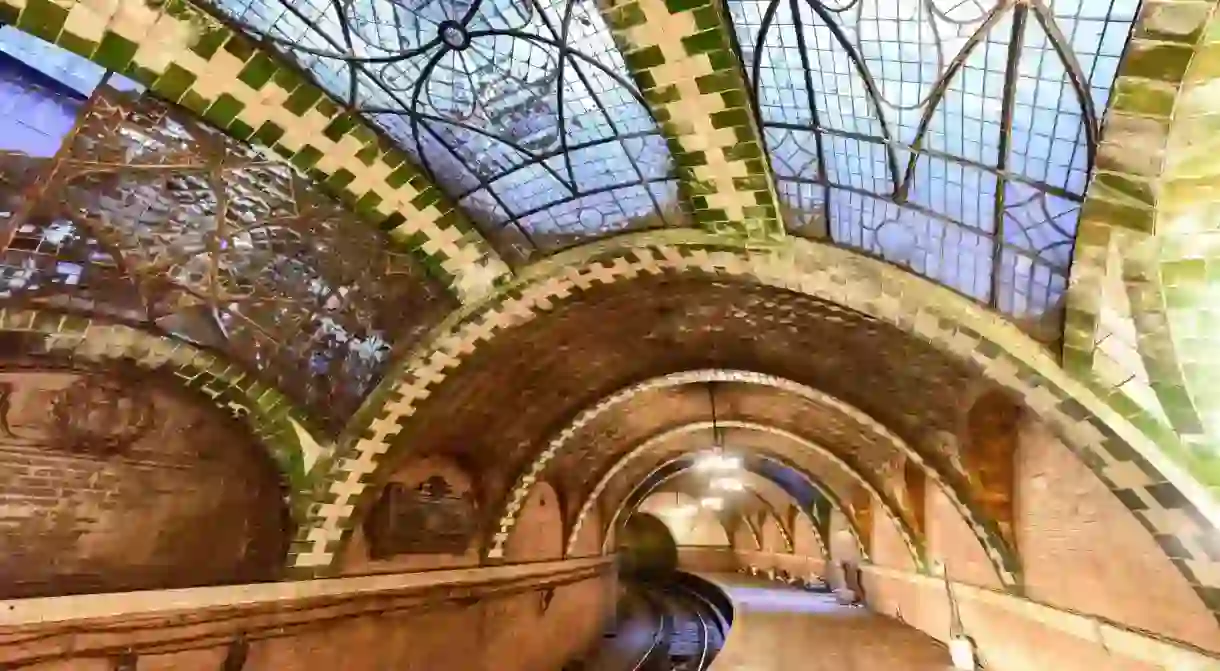The Most Fascinating Abandoned Subway Stations in New York

Since beginning operations in 1904, the New York City Subway has evolved into a behemoth of twisted tunnels. As you’d expect from a network more than a century old, some parts of it have fallen into disuse, with some of those underground tombs of transport still discoverable today. Intrigued? These are the most fascinating abandoned subway stations in the Big Apple.
Did you know – Culture Trip now does bookable, small-group trips? Pick from authentic, immersive Epic Trips, compact and action-packed Mini Trips and sparkling, expansive Sailing Trips.
Old City Hall, Manhattan

The best-known disused station in town is Old City Hall. The first-ever subway ride in New York City departed from here in 1904. Designed by architects Heins & LaFarge, the terminal featured elegant chandeliers, skylights and vaulted tile ceilings created by artisan Rafael Guastavino. It was closed in 1945, mostly because it was made without the practicalities of larger trains in mind, rendering it one of the least-used stations in Manhattan.
Today, Old City Hall is not totally off-limits – you can explore it by booking a tour with the New York Transit Museum. However, they only run sporadically throughout the year, and you must be a member of the museum to claim a spot.
Court Street, Brooklyn

The former Court Street stop in Brooklyn, which closed in 1946, is the most accessible of all the abandoned stations, as the New York Transit Museum is built around it. Founded in 1976, the museum houses a rotating selection of 20 subway and elevated cars, which date back as far as 1907. The exhibition was initially part of the United States Bicentennial celebrations and was intended to be temporary, but it was later turned made permanent due to popular demand. The decommissioned station has made many cinematic appearances over the years, its most famous being in The Taking of Pelham One Two Three (1974).
South Fourth Street, Brooklyn
In 2009, an abandoned subway station in New York City was visited by a group of daredevil artists, who covered the cavernous space in paintings and murals. The Underbelly Project, led by street artists PAC and Workhouse, saw 103 international creatives sneak unnoticed into the belly of the subway system and transform it into the most exclusive studio in town. Although the location of this particular station has never been confirmed by either the Underbelly organizers or transit officials, it’s believed to be South Fourth Street in Williamsburg, Brooklyn. Visiting the station is illegal and highly dangerous, so it’s best to admire the artwork online rather than make the trip yourself.
91st Street, Manhattan

This station shut down in 1959, but is still visible from the 1 train between the 86th Street and 96th Street stops. You can only glimpse it for seconds, and it’s tough to see properly what secrets it holds, but in 1999 a New York Times reporter entered the empty platform in the hope of answering that question. What André Aciman found was trash – and lots of it. “This wasn’t just the detritus of a subway station, but the leftovers of mole people,” he wrote.
Dean Street, Brooklyn

When Dean Street station in Brooklyn closed in 1995, it was the first NYC station to shut down in more than 30 years. However, it was no surprise: the Franklin shuttle line was close by, and the under-used stop was in need of a significant facelift. When it closed, Dean Street was a mere decade away from celebrating a century of serving New York’s commuters.
18th Street, Manhattan
Like so many of NYC’s abandoned stations, 18th Street met its fate due to the continued development of the subway system. Larger stations were built to accommodate longer trains, the 23rd Street station proving the nail in this stop’s coffin. Though it may technically be abandoned, it isn’t out of sight or mind: anyone riding the 4, 5 or 6 line can sneak a glimpse of the graffiti-covered station any day of the year.
Myrtle Avenue, Brooklyn
Myrtle Avenue was a victim of the messy Brooklyn–Manhattan Transit line. Serving the line running between DeKalb Avenue and Manhattan Bridge, the station had its southbound platform completely removed after the merges and switches there led to transit congestion. Thankfully, the northbound platform still exists, and is a fantastic work of art that Q and B commuters can admire. Artist Bill Brand painted 30 images in the station that blend into an animated cartoon when viewed from a moving train. Dubbed the Masstransiscope, the innovative pieces were restored in 2008 and definitely prove worth a gander.
South Ferry, Manhattan
South Ferry station is still on the Big Apple map, but the old South Ferry is an abandoned and oft-forgotten space. This terminal was first created as an extension of the city’s original subway project, consisting of an inner and outer loop track. One of the two side platforms was closed in 1977. After the millennium, the station was closed, and the current South Ferry was opened.
76th Street, Queens
If you were to ask a commuter traveling between Brooklyn and Queens in 1948 about the existence of the 76th Street station, few would say they’ve seen it with their own eyes. Almost a century later, rumors persist that the abandoned terminal never even existed. Historical accounts (both official documentation and hearsay) contradict each other. All we know is that, even though the station was indeed operational, it closed after only a year. Today, a select few underground explorers claim to have found the near-mythical stop – will you become one of them?
Nick Dauk contributed additional reporting to this article.













